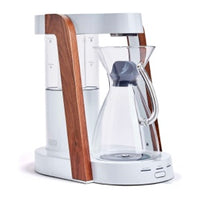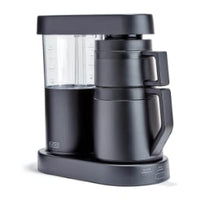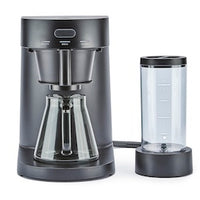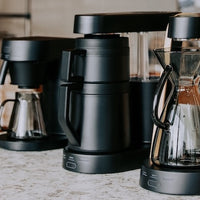Why the First Brew With New Beans Rarely Tastes Right
You open a fresh bag of beans — the aroma is promising, the roast looks perfect, your gear is dialed in — but that first cup just doesn’t taste quite right. It’s not bad, but it’s not amazing either. What gives?
The first brew with a new bag of beans rarely hits the mark. That’s not a sign of failure — it’s part of the process.
Coffee is a moving target. Different origins, roast levels, and freshness windows all affect how the beans interact with your grinder, water, and brew method. Learning how to adjust on the fly is part of becoming a more intuitive, skilled home brewer.
Coffee Is a Variable Ingredient
Even when you’ve got your technique locked in, beans bring their own set of variables:
-
Origin and variety: A washed Ethiopian will behave very differently from a natural Brazil
-
Roast level: Lighter roasts are denser and require different grind settings than dark roasts
-
Freshness: Gassy, just-roasted beans may need time to rest
-
Moisture content: Influences how quickly water can extract flavor
Your grinder, ratio, and timing might have worked perfectly on your last bag — but even a small shift in any of these bean factors means you’ll need to recalibrate.
That “Off” First Cup Isn’t Your Fault
The first brew with new beans is often a test run — like sighting in a camera lens. You’re not aiming for perfection on the first try, but rather gathering clues:
-
Too sour? Try a finer grind or higher dose.
-
Too bitter? Go slightly coarser or reduce brew time.
-
Flat or dull? Consider water temp, or try a bloom adjustment.
The goal is to taste and tweak. Use that first cup to learn what the beans are asking for.
Fresh Beans Need a Rest Period
If your coffee was roasted very recently — like within the last 2–3 days — it may still be releasing CO₂. This degassing can disrupt extraction by creating uneven water flow during brewing. That’s especially noticeable in pour-over and espresso methods.
Letting beans rest for 3–7 days after roast often results in more balanced, stable flavors. So if the first brew tastes wild, try again a few days later.
How to Adjust Efficiently
Here’s a quick troubleshooting sequence for dialing in new beans:
-
Brew with your usual setup
-
Taste carefully and take notes
-
Adjust one variable at a time (grind, ratio, temp, time)
-
Repeat until the cup feels “true” to the bean
Some beans come into focus quickly. Others take a few brews to unlock. Either way, don’t expect perfection right away — treat it as a discovery process.
When Consistency Helps You Notice Differences
If your brew gear and process are consistent, you’ll more easily notice what new beans are doing. That’s where a well-designed machine can help. It removes extra variables so you can focus on the one that changed: the coffee itself.
Brewers like those from Ratio Coffee are built for repeatable, even extraction — so when your cup tastes different, it’s likely the beans, not the method. That makes dialing in new bags easier and faster.
Embrace the Tuning Process
The first brew with a new coffee isn’t supposed to be perfect. It’s meant to give you feedback. Tuning your grind, ratio, and brew time is how you unlock what that coffee can really do.
With time, you’ll learn to read the signs. And when you do dial it in? That second or third cup is pure magic.
Frequently Asked Questions
Why doesn’t the first brew with new beans taste right?
Each batch of beans has different density, roast, and moisture content — it often takes a few brews to dial in.
Should I change my grind when switching beans?
Yes. Light roasts often need a finer grind; darker roasts may work better with a slightly coarser one.
How long should beans rest after roasting?
Most beans benefit from 3–7 days of rest. Freshly roasted coffee can taste erratic due to degassing.
What’s the easiest way to dial in new beans?
Brew a test cup, take notes, and adjust one variable at a time (start with grind size).
Can a coffee machine help with consistency?
Definitely. Machines like those from Ratio Coffee minimize user error, so it’s easier to focus on what the beans need.
 Ratio Eight S2
Ratio Eight S2
 Ratio Eight Original
Ratio Eight Original
 Ratio Six
Ratio Six
 Ratio Four
Ratio Four
 Compare Machines
Compare Machines






